Australian philanthropist and entrepreneur Dick Smith believes there is no time to lose when it comes to rethinking the country’s anti-nuclear stance.
When he received an email from Sydney sixth grade student Lachlan Kidd asking him to come to his school to discuss the problem, he decided to avoid the traffic and pay a quick visit instead.
Then Daily Mail Australia learned that the keen pilot was spotted on Friday landing his helicopter on an oval near The King’s School in the city’s west.
“What happened was I got information from Lachlan, a 12-year-old boy, about nuclear energy,” Smith told Daily Mail Australia when asked about the sighting.
‘His class had been studying nuclear energy and they wanted me to come over and talk about it.
‘He’s a very bright young man and the work his class did sound quite amazing.
‘So I arranged to go by helicopter, because I had given a lecture there before with Cate Blanchett, and there was enough space for my helicopter to land.
“I think it’s absolutely criminal that discussing the miracle solution that could solve our country’s energy problems is illegal. It’s just ridiculous. That needs to change as soon as possible.
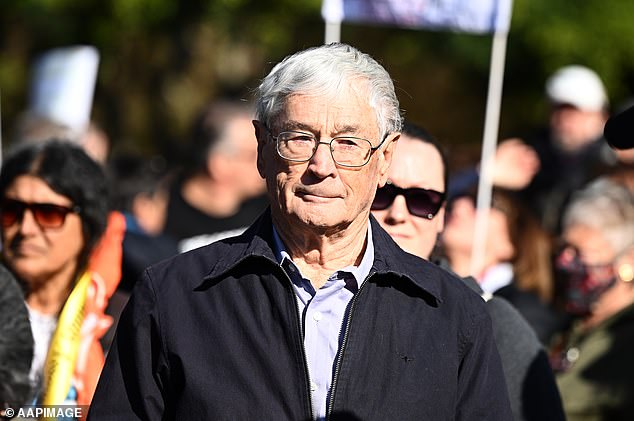
Dick Smith jumped in a helicopter after receiving an email from a sixth grader – and went to his class to give a lecture on nuclear energy
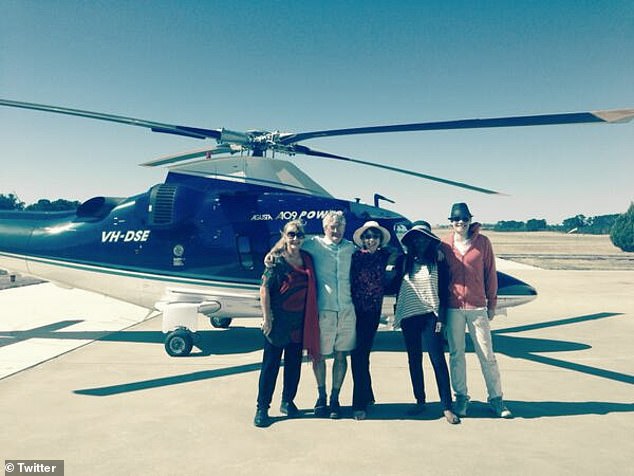

The millionaire philanthropist says he paid a brief visit to the school because he believes it is important to have serious conversations with the next generation of Australians.
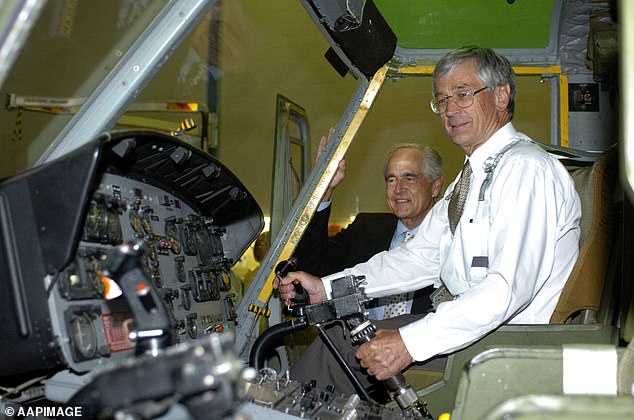

Chopper is Dick Smith’s preferred means of transportation when there is no time to lose
‘Instead of waiting in traffic for an hour, I jumped in my helicopter at my house in Terrey Hills and was there in seven minutes.
‘I explained to the children: “In a helicopter there is no speed limit, no traffic lights and no radar, so I fly there at 280 km/h!”
“So I went out and gave about a 25-minute talk about how we should put (nuclear energy) on the agenda — it really should be on the table — and I got back home to Terrey Hills about 10 minutes ago.”
Despite his busy schedule, Mr Smith felt it was important to take the time to engage with the next generation of young Australians about important issues surrounding renewable energy and their future.
“The nuclear issue is incredibly important for our young children,” he said. “I believe in climate change and I worry about my grandchildren.
‘I believe the only solution for the world to address the climate problem is to transition to and embrace nuclear energy.
‘Thirty-one countries already have nuclear power, which I explained to the young schoolboys, and it is the silver bullet. It is the way to solve our problem.
‘And we have a government that not only says you can’t have it, but you can’t put it on the table.
‘I explained to the boys that it didn’t make sense.
‘The government claims it is too expensive, but I said that countries like Bangladesh and Pakistan have embraced nuclear energy. They are poor countries, so it doesn’t make sense that they can afford nuclear energy, that Bangladesh can afford nuclear energy and Australia can’t.
“It just doesn’t meet the standards of common sense,” I explained to the boys.
It was a message that apparently resonated with the public.
“At the end of the lecture there was a vote on nuclear energy and I think about 90% of the children agreed,” he said.
‘They are only 12 years old now and not yet eligible to vote, but they are the next generation that will move this country forward.
‘That’s why I’m a big supporter of young people like Will Shackel, an 18-year-old Brisbane schoolboy who is campaigning for the legalisation of nuclear power and is running a petition on the Nuclear for Australia website.’
Mr Smith criticised Prime Minister Anthony Albanese’s anti-nuclear stance during an interview with Shackel, the founder of Australia’s first youth campaign for nuclear energy, earlier this year.
While the Liberal Party is proposing to build a nuclear industry in Australia, the Labor Party and the Greens are strongly opposed to this, preferring renewable energy sources to achieve net zero carbon emissions by 2050.
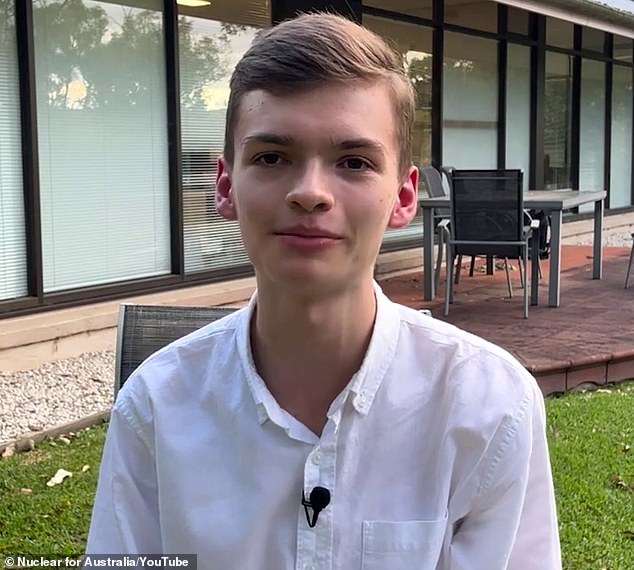

Mr. Smith says he is a supporter of fellow young nuclear activist Will Shackel.
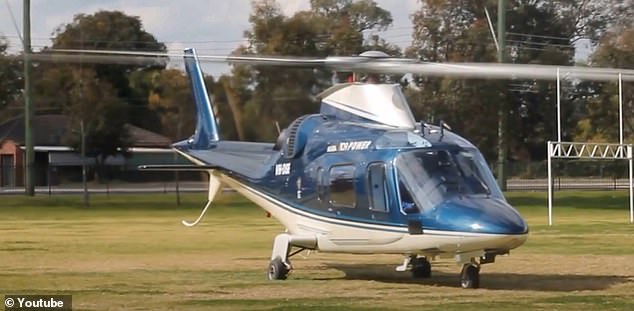

This is not the first time that Mr. Smith has landed his helicopter on a schoolyard in recent years
Mr Smith said Mr Albanese’s opposition was misplaced and had a negative impact on Australia’s youth.
“Please look at this objectively because I believe this is the only answer going forward and we need to take action as quickly as possible,” Smith said.
“We are no longer there when the problems arise.”
His comments came after Climate Change Minister Chris Bowen previously admitted Australia would need to install 40 large wind turbines a month and 22,000 solar panels a day to meet the government’s net zero target.
Patricia McKenzie, chair of AGL, the country’s largest coal-fired power producer and carbon emitter, warned in 2022 that the national electricity market would need about 98 gigawatts of new capacity to meet the 1.5 degree global warming threshold set in the Paris Agreement, potentially accelerating the closure of coal-fired power stations.
She said new capacity would be needed by 2030 to “keep the electricity supply going”, putting “unacceptable pressure on energy security and affordability”.
Australia has added just 2.2 GW of capacity over the past five years.
Mr Smith said it was unrealistic to expect renewables to meet all of Australia’s energy needs as coal is being phased out and gas remains a backup source until 2050.
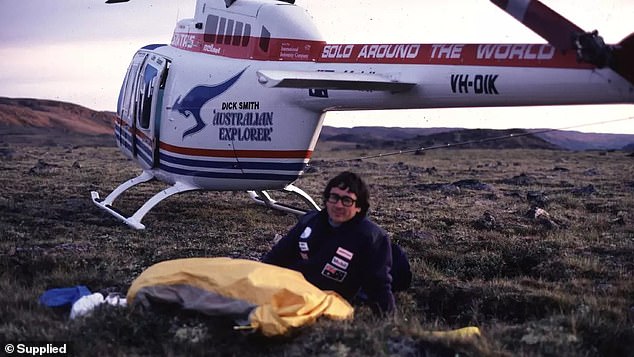

Smith became the first person to fly solo around the world in a helicopter in the 1980s. Above is the Dick Smith Australian Explorer
“I’ve always thought renewables are great, but my common sense told me you can’t run a whole country entirely on renewables. If that were the case, I would support it. But I know for sure that’s not the case,” he said.
‘It’s never been done anywhere in the world, and to be able to do that, to have industry, transport, hospitals and everything running continuously, on the wind and the sun. Wonderful if it could, but it can’t.’
Mr Smith revealed he has a way to solve the controversial nuclear waste problem, saying the waste could be stored in the military-banned Olympic Dam mine in northern South Australia.
‘You drive into the mine, and there are huge caves where they’ve extracted the uranium ore. We could safely store our waste there.’
Mr Smith said France uses nuclear power for 70 percent of its electricity production and the waste is stored in power stations.
‘Do you get warnings not to go to France? Of course not, it is a very safe place.’
Mr Smith revealed that it was indeed Labor’s longest-serving prime minister, Bob Hawke, who converted him to nuclear power at Kirribilli House on Australia Day 1988.
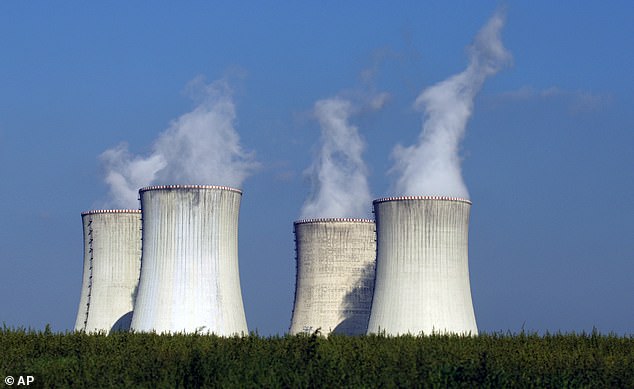

Mr Dutton’s coalition has supported the creation of a nuclear power industry in Australia, although it has remained relatively quiet on the issue since introducing its policy earlier this year.
‘Bob Hawke said to me, ‘Dick, you’re against nuclear power,’ and I said no, because I helped Bob Brown and the blockade and I was known as an environmentalist.’
Bob said, ‘We have to move to nuclear energy, that’s so obvious.’
‘Here he is, the Labor Prime Minister, one of the most famous and best Labor Prime Ministers, telling me I must support nuclear power.’
Opposition Leader Peter Dutton said nuclear power could reduce electricity prices and cut carbon emissions to zero.
“You can replace the coal-fired generators with the smaller or the larger modular reactors,” he said.
‘The latest technology, zero emissions, cheaper and you can distribute the energy via the existing electricity grid.
“It means you have the reliability to bring renewables into the system.”



